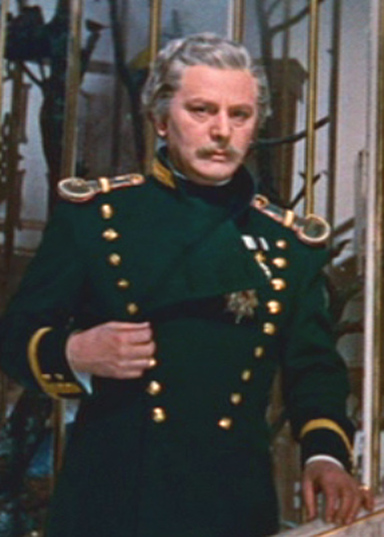There are two things I haven’t done for a while – 1) posted here and 2) watched Lola Montes (Ophuls, 1955.) Both are long overdue, and so today – the first day of another month – I thought I’d post a couple of film stills from my collection. Both are black and white, which does no justice to the lush cinematography and gorgeous Eastmancolor of the film – as well as being Ophuls’ final film, Lola Montes was his only venture into colour, and we’ll never know what wonders he might have achieved had it been otherwise.

AW as King Ludwig I of Bavaria in ‘Lola Montes’
AW plays Ludwig I (1786-1868), King of Bavaria from 1825 until he was dethroned by the revolution 1848. The king’s downfall was partly due to his public relationship with Lola Montez (1821-61), a former dancer and courtesan who wielded influence over Ludwig ever since they met in Munich in 1846. Born in Ireland, her early life saw her flitting around between Liverpool, London, Montrose, Calcutta and Paris, and by the time she met Ludwig she had been married, separated, had an affair with Franz Liszt (other alleged lovers included Alexandre Dumas, author of The Three Musketeers) and performed on stage under the pseudonym of ‘Lola Montez, the Spanish Dancer.’ Her risqué ‘Spider Dance’ would later become notorious.

Lola (Martine Carole) and the KIng
After the fall of Ludwig, Lola had to flee Bavaria, spending time in Switzerland and England before emigrating to America where she took part in public lectures and performances about her past. It is probably this period of her life that suggested the bold concept of Ophuls’ film – to present Lola’s life as a circus performance. As a historical event this is pure fiction, but it provides scope for playing with ideas about public life as a visual spectacle, with the sins of a celebrity forming the centre of (quite literally) a media circus.
Such a circular visual device obviously recalls La Ronde (Ophuls, 1950) where again there is a central narrator around whom the story revolves: however, the Ringmaster (Peter Ustinov), is a much darker and more cynical character than AW’s master-of-ceremonies in La Ronde. There is a cruelty about the Ringmaster’s exploitation of the woman, who is forced to answer questions about her past life in exchange for money. Her life in the circus ring is in sharp contrast to her former life with Ludwig, probably the happiest period of her life. In my next post on Lola Montes I hope to write more about AW’s performance and include some colour pictures from the film.

